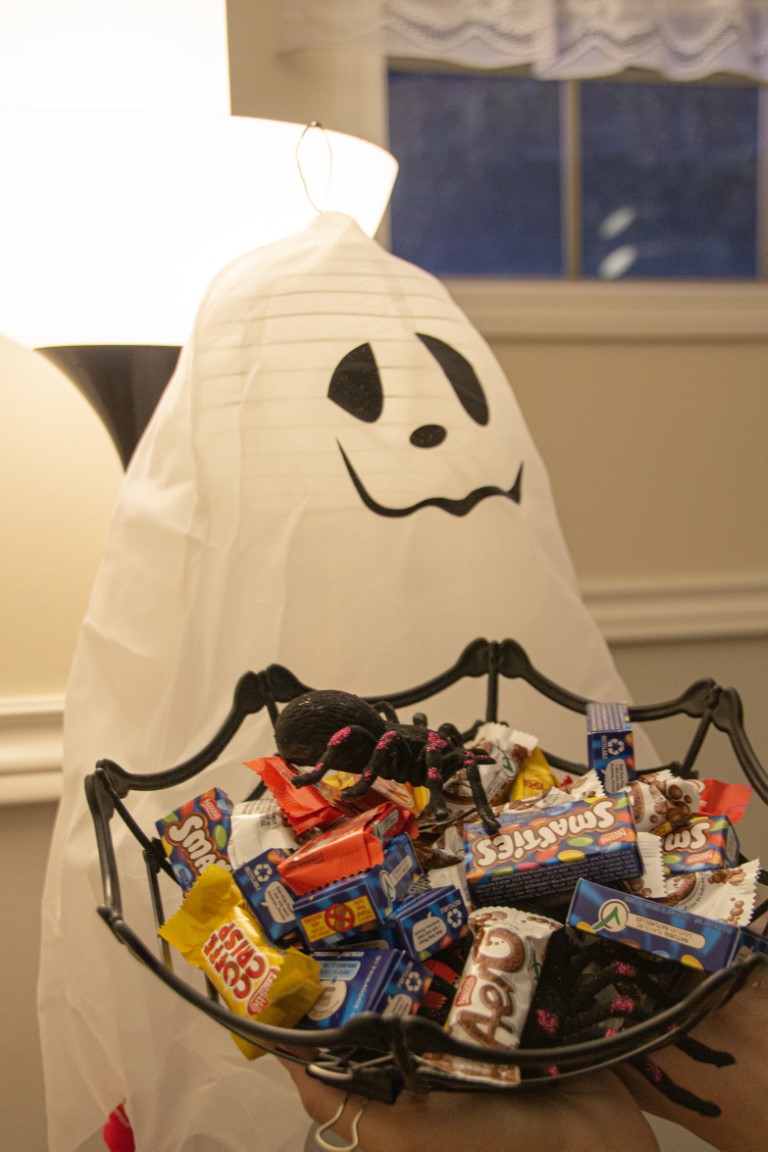
Treat or treat!
By Brandon Yip, Senior Columnist
For many people, especially young children, a large part of Halloween includes receiving large amounts of candy. It can range from numerous types of candies: Snickers, Twix, Kit Kat, Coffee Crisp, Caramilk, Oh Henry!, Mars, Reese’s Peanut Butter Cups, Reese’s Pieces, Aero, and more. While I was making plans to eat copious amounts of Halloween candy this year, it made me wonder how the tradition of trick-or-treating and eating candy on Halloween started.
Historically, in the United States, the origins of trick-or-treating can be traced back to the 1930s and early 1940s. Children would go door-to-door and would receive items ranging from pieces of cake to fruit, homemade cookies, toys, coins, and nuts. It was not until the 1950s that candy would be introduced as part of the Halloween trick-or-treating custom. As trick-or-treating was getting more popular, candy manufacturers decided to get in on the action—marketing their products for Halloween. Candy was seen as very convenient and inexpensive.
In the 1970s, Halloween candy—primarily wrapped candy—was considered the safest item to be received (especially by young children) during Halloween. There were concerns about the hazards of accepting unwrapped items that could be tampered with or poisoned; therefore, commercial wrapped candy was the only safe choice. Here is a look at the history of some of today’s most well-known Halloween candy according to History.ca
Hershey’s Milk Chocolate & Hershey’s Kisses
Chocolate pioneer Milton Hershey invented these two chocolate delicacies: the Hershey’s Milk Chocolate bar in 1900, and Hershey’s Kisses in 1907. During that time, chocolate was considered a luxury treat for the rich and privileged. Hershey was able to change that lack of inclusivity by mass producing tons of his milk chocolate—thus making it affordable for average American people. Notably, in the early 1900s Henry made another creation—building a town surrounding his chocolate factory: Hershey, Pennsylvania.
Reese’s Peanut Butter Cups
After moving to Hershey in 1917, Harry Burnett Reese worked as a dairyman for the chocolate company, and afterward worked at its factory. Reese became inspired by Milton Hershey’s success; He started making candies in his basement. Reese built his own factory in the middle of the 1920s, making a vast array of candies. One of those creations were peanut butter cups in 1928, which he made with Hershey’s chocolate. The onset of WWII was difficult for Reese’s business. He had a short supply of ingredients, and therefore stopped making his other candies to make the primary focus his most popular item: peanut butter cups. Hershey took notice and in 1963, bought the H.B. Reese Candy Company.
M&M’s and more
Frank Mars was a candy maker from Minnesota who was struggling financially in 1923. He released the Milky Way bar, which would become a bestseller. Seven years later, he created the Snickers bar, which was named after his favourite horse. Mars was not finished as he later released the 3 Musketeers bar in 1932. Forrest Mars (son of Frank) later joined the company, but later departed after disagreeing with his father. Forrest moved to England where he invented the Mars bar in the early 1930s. In 1941, he released the candies called M&M’s. At the time Mars believed that WWII would lead to a short supply of cocoa. He then became business partners with Bruce Murrie, the son of a Hershey executive in order to gain access to a large supply of ingredients. M&M’s stands for Mars and Murrie.
Kit Kat
The Kit Kat bar is another classic Halloween candy. It was first sold in 1935 in England as Rowntree’s Chocolate Crisp. Two years later, it was renamed the Kit Kat Chocolate Crisp. The genesis of its name was believed to have come from a London political and literary group, the Kit-Cat (or Kit Kat) club, founded in the late 17th century. The Kit Kat brand has been owned by Nestle since 1988. Of course, Nestle is the creator of another Halloween yummy candy, the Nestle Crunch bar, which was first released to the chocolate-craving public in the late 1930s.



